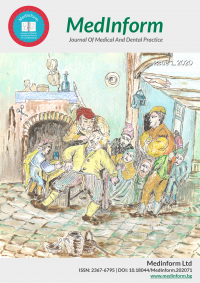Issue One 2020
2020, Vol. 7, issue 1, (January)
Original Article
Oral hygiene and gingival status in teeth restored with dental amalgam
Abstract:
Dental amalgam has been a basic restorative material in dentistry for over 150 years due to its low cost, universal availability, ease of application. It has protected many patients from pulp complications, extractions and edentulous. It is still used in many countries, especially in dental care under the universal health insurance system. In addition to environmental problems, this material may have other effects on the surrounding tissue.
We’ve compared the values of the oral-hygiene and gingival indexes in 43 patients, who have at least one amalgam restoration. Our investigation shows harmful effects of dental amalgam on periodontal health. In most of the parameters we tested, we measured significant differences between teeth reconstructed with dental amalgam and all other teeth. Regarding the Papilla Bleeding Index Ratio the values in all teeth were 0.76 vs 1.33 of these with dental amalgam. We observed also big differences in the Hygiene Index – 52.5% vs. 80.4% and in the Debris Index – 1 vs. 1.5. We did not report differences only on OHI-CI.
We found an extremely high relationship between DI and CI, DI and OHI. There is also a natural relationship between the higher Oral Hygiene Index (characterized by a larger amount of tartar and plaque) and the result of it – inflammation of the soft tissues of the periodontium (gingivitis), as shown by the Papilla Bleeding Index. Our study shows that teeth restored with dental amalagam can, in addition to having adverse environmental and health effects, causing allergies or increased corrosion potential, contribute to poor periodontal health, maybe due to surface roughness.
Authors:
Vladimir Panov; Department of Conservative Dentistry and Oral Pathology, Faculty of Dental Medicine, Medical University, Varna;Martina Markova; Department of Conservative Dentistry and Oral Pathology, Faculty of Dental Medicine, Medical University, Varna;

